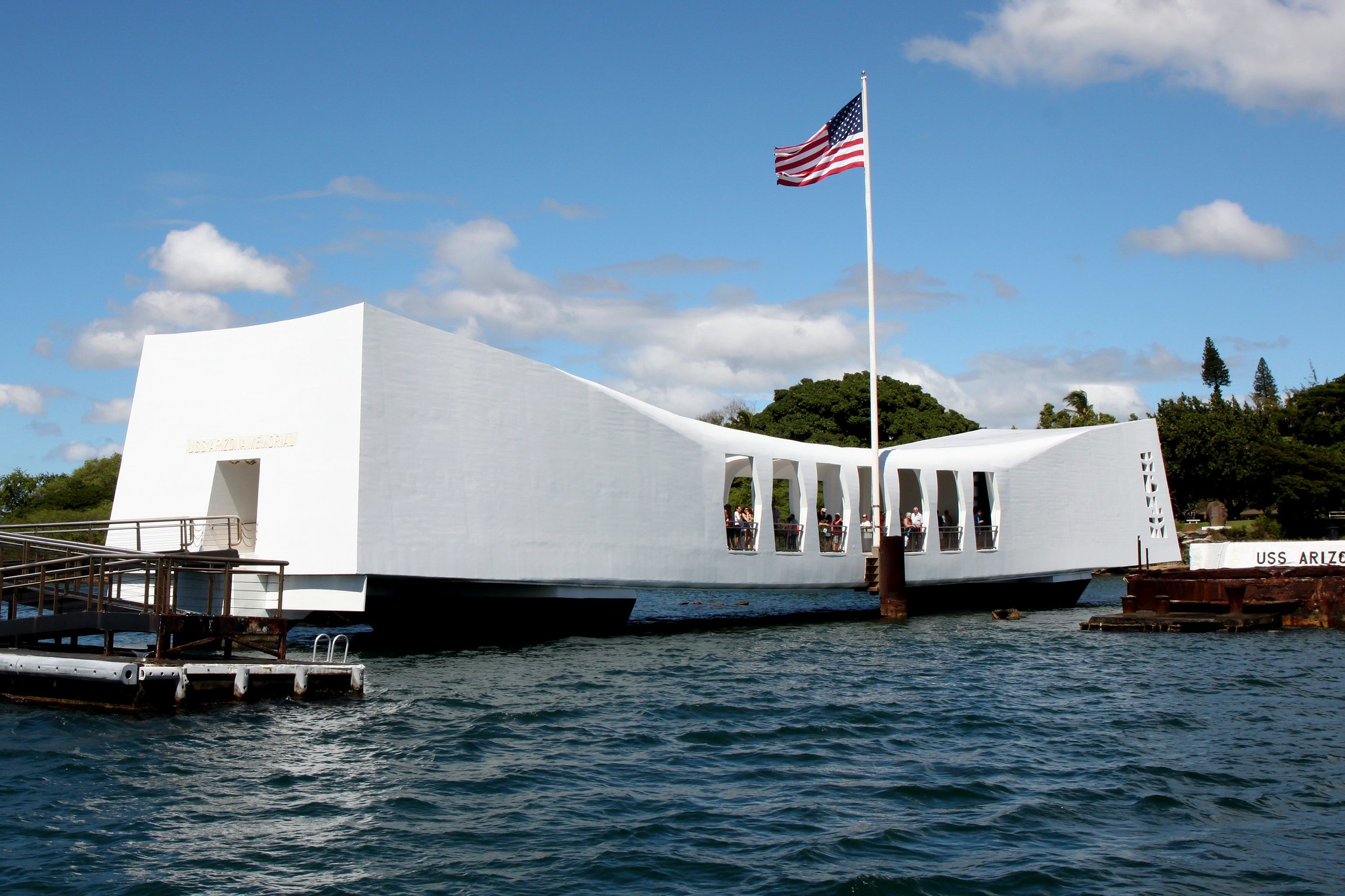As the gentle Hawaiian breeze rustles through the palm trees, visitors to the Pearl Harbor National Memorial are immediately struck by the serene atmosphere that belies the site’s tragic history. Located on the island of Oahu, this hallowed ground serves as a poignant reminder of the devastating attack on December 7, 1941, that propelled the United States into World War II.
Upon arrival, visitors are greeted by the somber sight of the USS Arizona Memorial, a stark white structure that straddles the sunken battleship where 1,177 sailors and Marines lost their lives. The memorial, accessible only by boat, offers a unique perspective on the events that unfolded on that fateful day. As you step onto the memorial, a hush falls over the crowd, and the weight of history becomes palpable.
The journey to the USS Arizona Memorial begins at the Pearl Harbor Visitor Center, where exhibits and artifacts provide context for the attack and its aftermath. Here, visitors can explore interactive displays, view personal effects of the fallen, and watch a documentary that sets the stage for the emotional experience to come. It’s not uncommon to see tears in the eyes of both young and old as they absorb the gravity of the events that transpired here.
As you board the Navy-operated shuttle boat to the memorial, the anticipation builds. The short ride across the harbor offers a moment of reflection and an opportunity to take in the surrounding naval base, which remains an active military installation to this day. Upon reaching the memorial, visitors are struck by its simple yet powerful design. The structure spans the mid-portion of the sunken battleship, with the ship’s rusting hull visible just below the surface of the water.
Inside the memorial, a sense of reverence pervades the air. The names of those who perished are etched into a marble wall, serving as a stark reminder of the human cost of war. Many visitors pause to lay leis or flowers in honor of the fallen, while others stand in silent contemplation. Perhaps most moving is the sight of small droplets of oil that continue to seep from the ship’s fuel tanks, creating iridescent “black tears” on the water’s surface – a haunting reminder that the Arizona is not just a memorial, but also the final resting place for many of its crew.
Beyond the USS Arizona Memorial, the Pearl Harbor National Memorial offers several other significant sites for visitors to explore. The USS Bowfin Submarine Museum and Park provides insight into the “Silent Service” of submarine warfare, while the Battleship Missouri Memorial allows visitors to stand on the deck where Japan formally surrendered, bringing an end to World War II.
For those seeking a deeper understanding of the Pacific Theater, the Pearl Harbor Aviation Museum showcases an impressive collection of aircraft and exhibits detailing the aerial aspect of the war. These additional sites complement the USS Arizona Memorial, offering a comprehensive look at the events surrounding Pearl Harbor and the subsequent conflict.
As visitors depart the memorial, many find themselves profoundly moved by the experience. The Pearl Harbor National Memorial serves not only as a tribute to those who lost their lives but also as a powerful reminder of the importance of peace and reconciliation. It’s a place where history comes alive, where the sacrifices of the past are honored, and where future generations can learn valuable lessons about the cost of war and the price of freedom.
In the end, a visit to the Pearl Harbor National Memorial is more than just a tourist attraction – it’s a deeply personal and emotional journey that leaves an indelible mark on all who make the pilgrimage. As the sun sets over the harbor, casting a golden glow on the water, one can’t help but feel a sense of gratitude for those who made the ultimate sacrifice and a renewed commitment to ensuring that such a tragedy never happens again.
The Pearl Harbor National Memorial stands as a solemn tribute to the lives lost during the December 7, 1941 attack and serves as a powerful reminder of the events that propelled the United States into World War II. This historic site not only preserves the sunken USS Arizona and other key artifacts but also educates visitors about the significance of the attack and its aftermath. The memorial continues to play a crucial role in honoring the sacrifices made by service members and civilians, fostering a sense of national unity, and promoting peace and reconciliation between former adversaries. As a symbol of resilience and remembrance, the Pearl Harbor National Memorial ensures that future generations will never forget the lessons learned from this pivotal moment in world history.

